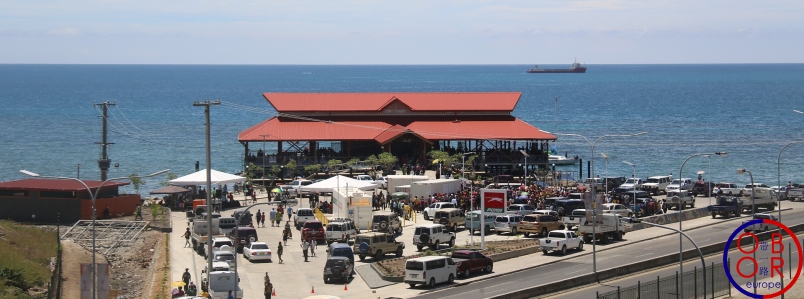
After several months of uncertainty, the United States, in cooperation with Japan and Australia, announced, on June 25, the financing of a LNG project in Papua New Guinea.
This $1 billion project, is expected to be completed in the next three years through loans from the US Overseas Private Investment Corporation, in cooperation with the Japan Bank for International Cooperation and Australia’s Export Finance and Insurance Corporation.
Papua New Guinea has recently experienced some instability. On May 26, 2019, Premier Peter O’Neill, in office since 2011 and re-elected in August 2017, announced his resignation. He was replaced by opposition candidate James Marape. However, this change is unlikely to impact Papua New Guinea’s participation in the “Belt and Road Initiative“, with China remaining a major partner of Port Moresby.
In fact, it is very likely that Papua New Guinea would not have benefited from this loan offered by the United States, Japan and Australia, if that country was not part of the BRI. By developing the BRI, China has ushered in a new area and opened the eyes of other powers to the infrastructure needs of developing countries.
Without knowing it, the United States thus participates in the BRI initiated by China. To counter China’s growing influence in the Asia-Pacific region, US Secretary of State Mike Pompeo announced in July 2018 the upcoming creation of a financial program for infrastructure abroad. This program is competing with the BRI; but it unintentionally boosts China’s much more ambitious initiative.
Because of the increasing needs for infrastructure in Asia, -according to the Asian Development Bank, Asia needs $ 26 trillion to modernize its infrastructure by 2030-, any initiative to strengthen infrastructure in developing countries is welcome, no matter it comes from China or the United States.
Papua New Guinea, one of the least developed states, therefore appreciates US decision to invest in its infrastructure, although this is a small-scale project. In PNG, as in Pakistan, investment made by China through the BRI, have made destinations more attractive to future investors.
However, in order to prevent increasing competition that may undermine local development, there is a need to better coordinate and articulate foreign investment in infrastructure in Asia. Without coordination, public money could be spent unnecessarily on projects that do not meet the needs of local populations.
Although the cooperation between the European Union and China is not yet optimal, we can note that the two powers share the same desire to work together and coordinate their efforts to develop connectivity between Europe and Asia. This model should be adopted by the United States. Given the importance of infrastructure development issues in Asia, all nations should join forces, and follow China ‘s “Belt and Road initiative.”
Share the post "US-funded projects in Asia: competitors or complementary to the BRI?"
